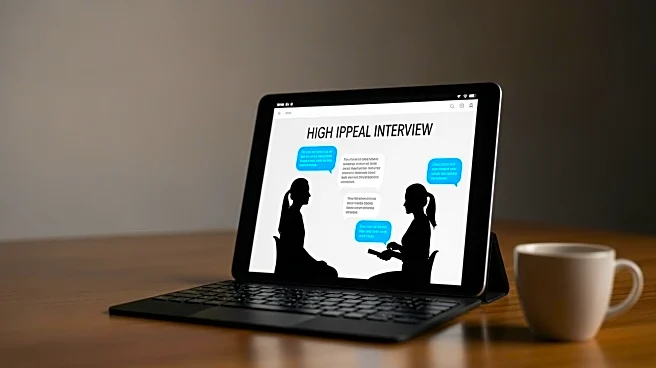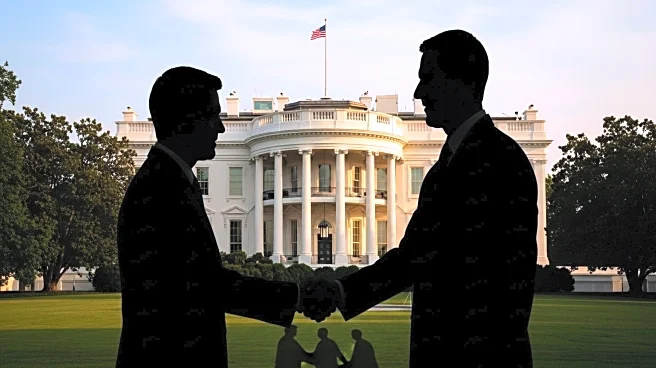What is the story about?
What's Happening?
President Donald Trump recently engaged in an unconventional interview with CNN journalist Jake Tapper, opting to communicate via text messages rather than a traditional phone or in-person interview. This interaction, which aired on CNN's 'State of the Union,' featured graphics of Trump's text responses on screen. During the interview, President Trump discussed his aspirations for peace in the Gaza-Israel conflict and issued a stern warning to Hamas, threatening 'complete obliteration' if hostages were not returned. The choice of text communication has sparked widespread speculation about Trump's health, with some questioning whether he was the one actually sending the messages. The White House has not commented on these speculations.
Why It's Important?
The mode of communication chosen by President Trump for this interview has led to renewed scrutiny over his health, particularly given his age and recent public appearances. The decision to text rather than speak directly has fueled rumors about his physical condition, with some suggesting it indicates an inability to engage in more demanding activities. This situation highlights the ongoing public interest in the health of political leaders, especially those in high office, and the potential implications for governance and public confidence. The lack of a direct response from the White House only adds to the uncertainty and speculation surrounding the president's health status.
What's Next?
The absence of a clear statement from the White House regarding President Trump's health may lead to increased pressure for transparency. Political opponents and the public may demand more frequent and detailed updates on his condition. Additionally, this incident could prompt discussions about the protocols for presidential communication and the importance of maintaining public trust through transparency. The situation may also influence how future interviews with high-profile figures are conducted, particularly in terms of verifying the authenticity of the communication.
Beyond the Headlines
This development raises questions about the ethical responsibilities of journalists in verifying the authenticity of their sources, especially when dealing with high-stakes political figures. It also underscores the evolving nature of media interactions in the digital age, where traditional formats are increasingly supplemented or replaced by digital communication. The incident may prompt media outlets to reassess their protocols for ensuring the credibility of interviews conducted through non-traditional means.
AI Generated Content
Do you find this article useful?















